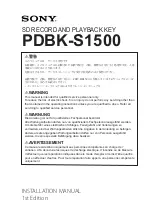12.3.1.1 Slave Element
<Slave alias="#0" slave_position="#0">
<VendorId>#x66668888</VendorId>
<ProductCode>#x20181302</ProductCode>
<Name>2HSS458-EC</Name>
<Emerg_size>#x08</Emerg_size>
<WatchDog>
<Divider>#x0</Divider>
<Intervals>#4000</Intervals>
</WatchDog>
<DC>
<SYNC SubIndex='#0'>
<Shift>#0</Shift>
</SYNC>
</DC>
<SyncManagers force_pdo_assign="#1">
<SyncManager SubIndex="#0">
...
</SyncManager>
<SyncManager SubIndex="#1">
...
</SyncManager>
</SyncManagers>
<Sdos>
<Sdo>
...
</Sdo>
<Sdo>
...
</Sdo>
</Sdos>
</Slave>
•
alias
attribute means the alias name of this slave.
•
slave_position
attribute means which position of the slave is on this network.
• <Name>element is the name of the slave.
• <Emerg_size> element is always 8 for all CoE device.
• <WatchDog> element is used to set the watch dog of this slave.
• <DC> element is used to set the sync info.
• <SyncManagers> element should contain all syncManager channels.
• <Sdos> element contains the default value we want to initiate by SDO channel.
12.3.1.1.1 SyncManagers Element
For a CoE device, there are generally four syncManager channels.
• SM0: Mailbox output
• SM1: Mailbox input
• SM2: Process data outputs
• SM3: process data inputs
<SyncManager SubIndex="#2">
<Index>#x1c12</Index>
NXP Semiconductors
nxp-servo
Open Industrial User Guide, Rev. 1.8, 05/2020
User's Guide
158 / 199


















